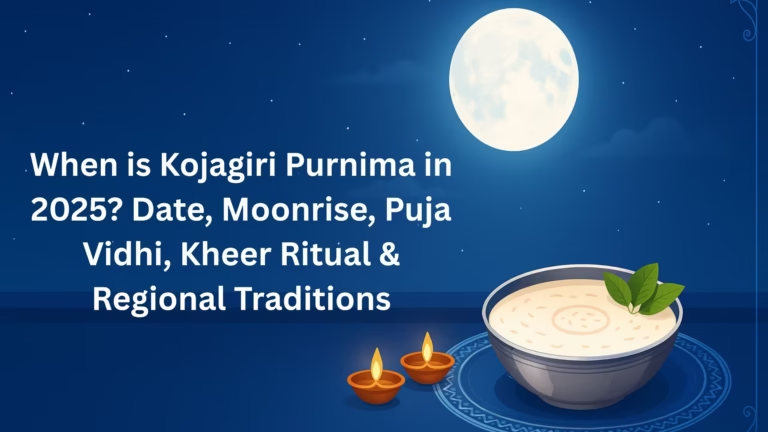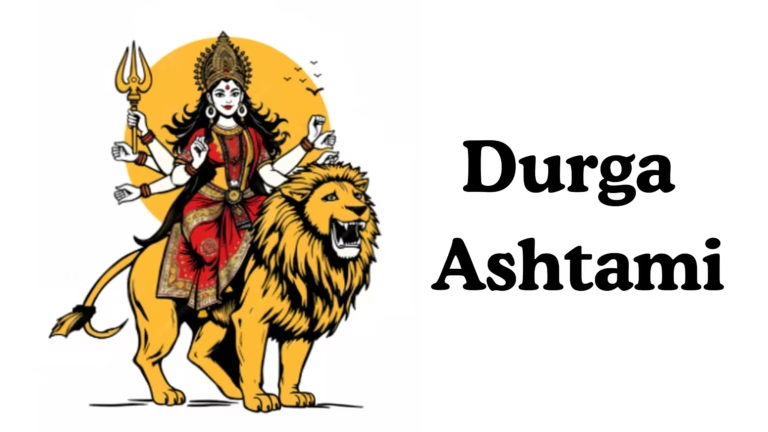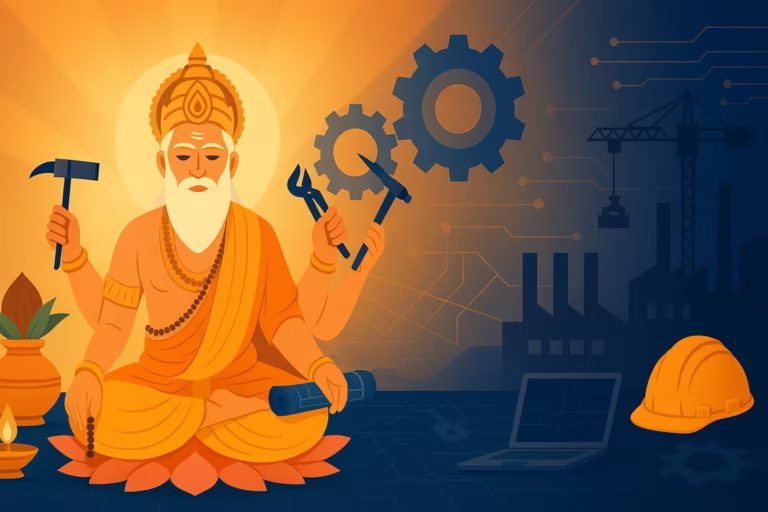Maha Shivaratri
Maha Shivaratri, also known as Shivaratri, is a significant festival for Hindus. It is the major festival dedicated to Lord Shiva. According to the Marathi calendar, Maha Shivaratri is celebrated on the Chaturdashi (14th day) of the Krishna Paksha in the month of Magha. As per the Hindu calendar, the monthly Shivaratri that falls in the month of Falgun is celebrated as Maha Shivaratri. The difference between both calendars lies only in the naming of months, as both methods observe Shivaratri on the same day. It is believed that the creation of the universe began on this day.
Devotees observe fasts and perform worship and rituals dedicated to Lord Shiva on the day of Maha Shivaratri. Special ceremonies and rituals take place in temples on this day. Shiva devotees offer Bilva leaves, Datura, cannabis, milk, water, honey, etc., to the Shiva Lingam.
Maha Shivaratri holds special significance for staying awake during the night. Devotees spend the entire night awake, meditating and praying to Lord Shiva. It is believed that on this day, Lord Shiva becomes easily pleased and fulfills the wishes of his devotees.
When Will be Mahashivratri In 2024?
In the year 2024, Mahashivratri will be commemorated on the 8th of March. This date holds immense importance in the Hindu calendar, as it signifies the convergence of cosmic energies and celestial alignments that are believed to amplify the spiritual vibrations during this sacred celebration.
The Mythological Narratives:
One prominent legend revolves around the cosmic marriage of Lord Shiva and Goddess Parvati. It is believed that on this auspicious night of Mahashivratri, Shiva and Parvati united in divine matrimony. Devotees celebrate this occasion as a union symbolizing harmony, eternal love, and the balance between masculine and feminine energies.
Regional Variations and Local Legends:
Mahashivratri assumes diverse forms and regional variations across India, each locale adorned with its unique stories and rituals. For instance, in the state of Gujarat, devotees engage in the fervent practice of ‘Jaagran’—staying awake through the night in devotion to Lord Shiva. In South India, legends surrounding the ‘Ksheerabdi Dwadasi’ are linked with the churning of the milky ocean and the emergence of the divine elixir.
Local folklore and legends embellish the tapestry of Mahashivratri, portraying Shiva’s benevolence, divine interventions, and his role as the harbinger of cosmic balance and spiritual awakening.
Through these captivating tales and regional nuances, Mahashivratri emerges as not just a festival but a rich tapestry of cultural heritage, spiritual insights, and timeless sagas that inspire devotees to immerse themselves in the divine presence of Lord Shiva during this celestial celebration.
Spiritual and Cultural Significance
Mahashivratri holds profound spiritual and cultural significance, serving as a cornerstone for devotees to deepen their spiritual connections and embrace cultural practices venerating Lord Shiva.
Spiritual Significance and Growth:
Mahashivratri stands as a catalyst for spiritual introspection and growth. Devotees ardently observe this day through fasting, meditation, and prayer, seeking to cleanse their minds and souls. The festival urges individuals to detach from worldly affairs and dive into the depths of their inner selves, fostering self-awareness, self-discipline, and spiritual evolution.
The nightlong vigil (jaagran) on Mahashivratri symbolizes a conscious awakening, signifying the transcendence from ignorance to enlightenment. Devotees engage in meditation, contemplating on the divine attributes of Lord Shiva, aiming to attain higher consciousness and inner peace.
Cultural Practices Associated:
Fasting on Mahashivratri is a common practice observed by devotees, symbolizing self-control, purification, and devotion. The fast, which often lasts for a day and night, signifies an offering of discipline and penance to seek Shiva’s blessings.
Visiting Shiva temples on Mahashivratri holds immense significance, as devotees offer prayers, perform special rituals, and pour milk, water, and other sacred items on the Shiva Linga, symbolizing reverence and devotion towards Lord Shiva.
Importance of Chanting Mantras:
Chanting of sacred prayers and mantras, particularly the potent mantra “Om Namah Shivaya,” holds deep significance during Mahashivratri. This powerful mantra is revered for its ability to purify the mind and invoke Shiva’s divine energies. Devotees believe that chanting this mantra with utmost devotion leads to the alleviation of negativity, bestowing inner strength, and fostering a sense of tranquility.
The vibrations produced by the chanting resonate with the cosmic energies, creating an aura of positivity and spiritual resonance, thereby elevating the consciousness of individuals.
Mahashivratri, beyond its religious connotations, serves as a cultural beacon, uniting communities through shared practices and devotion. The amalgamation of spiritual devotion and cultural traditions during Mahashivratri exemplifies the profound connection between spirituality, cultural heritage, and the pursuit of inner awakening among devotees worldwide.
Rituals and Traditions
Mahashivratri is adorned with a tapestry of vibrant rituals and traditions, each carrying profound symbolism and devotion, fostering a deeper connection between devotees and Lord Shiva.
Observance of Rituals:
– Bathing the Shiva Linga: Devotees ceremonially bathe the Shiva Linga, an iconic representation of Lord Shiva, with sacred substances such as milk, honey, water, and vermilion. This act symbolizes purification, renewal, and the cleansing of the soul.
– Offering Bilva Leaves: The Bilva or Bael tree leaves hold immense significance in Shiva worship. Offering these leaves to the Shiva Linga is believed to confer divine blessings and alleviate negative karma, signifying devout reverence and sincerity.
– Night-long Vigil (Jaagran): Devotees engage in a night-long vigil, chanting prayers, singing devotional songs, and meditating in homage to Lord Shiva. This ritual represents a state of heightened spiritual awareness, fostering a sense of awakening and divine connection.
Observance of Fasts and Offerings:
– Fasting: Devotees observe fasts on Mahashivratri as a gesture of self-discipline, purity, and devotion. Some abstain from food and water for the entire day and night, while others opt for fruit or milk as a form of sustenance. Fasting is believed to purify the body and mind, facilitating a deeper spiritual communion with Lord Shiva.
– Offerings to Lord Shiva: Various offerings such as milk, water, honey, fruits, and sacred ash (vibhuti) are presented to the Shiva Linga during prayers. These offerings symbolize gratitude, surrender, and devotion towards Lord Shiva. The act of giving offerings is believed to bestow blessings, prosperity, and divine grace upon the devotees.
Conclusion
Mahashivratri stands as an embodiment of devotion, spiritual profundity, and cultural celebration, weaving together a tapestry of reverence for Lord Shiva and the essence of self-realization.
It signifies more than a festival; it is a sacred journey towards spiritual awakening and inner transformation. Through rituals, prayers, and cultural observances, Mahashivratri becomes a gateway for devotees to delve into the depths of their souls, seeking the divine grace of Lord Shiva.



